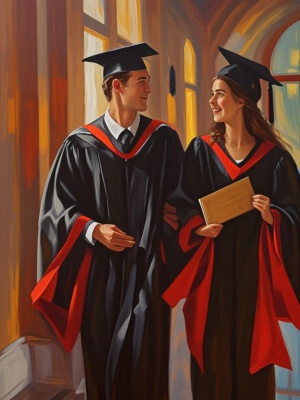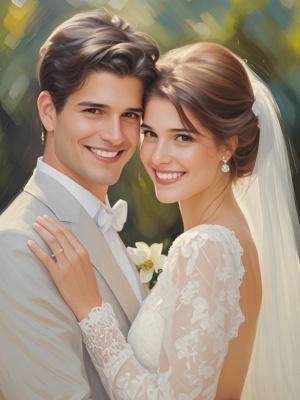The Captivating World of Abstract Oil Painting Portraits
Abstract oil painting portraits represent a fascinating intersection of traditional portraiture and modern artistic expression. These works break free from realistic representation, instead using bold colors, dynamic brushstrokes, and unconventional compositions to capture the essence of their subjects. For art enthusiasts and collectors alike, abstract portrait paintings offer a unique way to experience human emotion and personality through an innovative visual language.
The Essence of Abstract Portrait Painting
Defining Abstract Portraiture
Unlike traditional portraits that aim for photographic accuracy, abstract oil painting portraits prioritize emotional resonance over physical likeness. Artists working in this style might distort facial features, exaggerate expressions, or completely reimagine human forms using geometric shapes and vibrant color fields. This approach allows for deeper exploration of a subject's personality, mood, or the artist's interpretation.
Historical Context
The roots of abstract portrait painting trace back to early 20th century movements like Cubism and Expressionism. Pioneers like Picasso and Modigliani demonstrated how faces could be deconstructed and reimagined. Today's artists continue this tradition while incorporating contemporary influences, as seen in our gallery of modern abstract works.

Techniques in Abstract Oil Portrait Painting
Color as Emotion
Abstract portrait artists often use color symbolically rather than realistically. A melancholy subject might be rendered in cool blues and purples, while passionate personalities explode in reds and oranges. The thickness of oil paint allows for dramatic impasto techniques that add physical texture to these emotional landscapes.
Compositional Innovation
Key techniques include:
- Fragmentation: Breaking the face into geometric planes
- Layering: Building up transparent glazes for depth
- Gesture: Using expressive brushwork to convey energy
- Negative space: Allowing blank canvas to become part of the composition
The Creative Process Behind Abstract Portraits
From Concept to Canvas
Creating an abstract oil painting portrait typically follows these stages:
- Subject study (live model or reference photos)
- Initial sketches exploring abstract concepts
- Color palette selection based on emotional tone
- Underpainting to establish composition
- Layered development of abstract elements
Many contemporary artists now combine traditional methods with digital tools, as discussed in our AI painting guide.
Collecting Abstract Portrait Paintings

What Makes a Valuable Abstract Portrait?
When evaluating abstract oil painting portraits, collectors should consider:
- Artist's technical mastery of oil medium
- Originality of visual language
- Emotional impact and resonance
- Consistency within the artist's body of work
According to a recent Artsy article, abstract portraits have seen a 27% increase in collector interest over the past five years.
Conclusion: The Enduring Appeal of Abstract Portraits
Abstract oil painting portraits continue to captivate audiences by offering fresh perspectives on human identity. These works challenge viewers to engage more actively with art, interpreting meaning through personal experience rather than passive observation. Whether you're an artist seeking inspiration or a collector looking for meaningful pieces, abstract portraiture represents one of the most dynamic areas in contemporary painting. For those interested in exploring this art form further, our portrait transformation guide provides additional insights.
As the boundaries between figurative and abstract art continue to blur, oil portrait paintings maintain their relevance by combining centuries-old techniques with modern sensibilities. They remind us that sometimes, the truest representation comes not from replicating what we see, but from expressing what we feel.